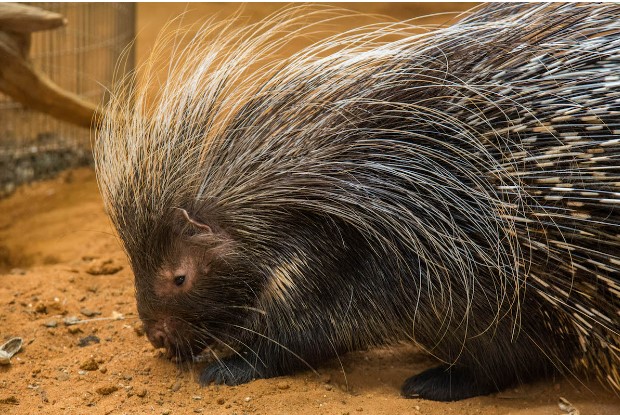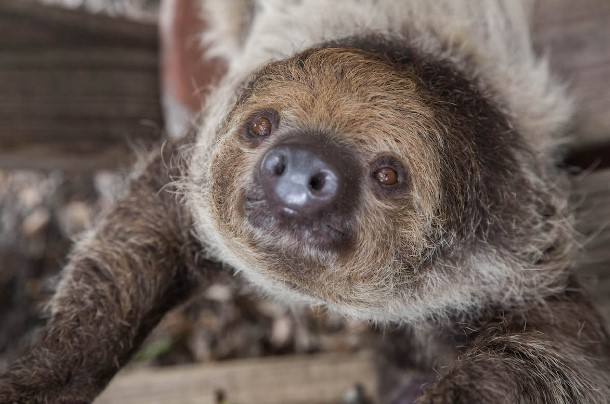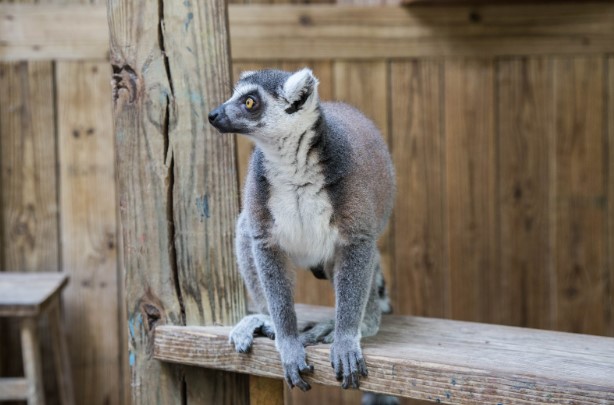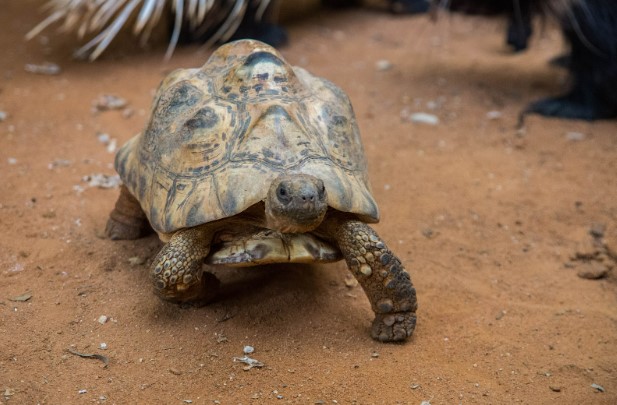While the crew at Wild Florida loves taking people on Orlando airboat rides and showing off the headwaters of the Everglades, there’s more to their wildlife park than being a top Orlando attraction. Their mission also involves promoting a connection with animals and teaching people about conservation. They aim to educate guests on not just the animals native to Florida but those found all over the world. Check out some of the exotic animals you’ll find inside Wild Florida’s Gator Park.
1. North African crested porcupine

The North African crested porcupine is the largest porcupine in the world. Its name is derived from the black and white quills along the back of its head that can be raised into a crest. Its quills measure about 13 to 14 inches (33 to 35 centimeters) long and are a great defense when fending off predators. But, luckily for the females, their babies aren’t born with these hard quills. It’s only about a week later after their birth that the soft quills along their spine begin to harden.
Want to pet these cuddly porcupines for yourself? Book a porcupine encounter at Wild Florida now!
2. Wallaby
Members of the kangaroo clan, wallabies are marsupials (or pouched mammals) that are primarily found in Australia. Like the kangaroo, wallaby joeys are born tiny and underdeveloped, retreating into their mother’s pouches. Reaching 5 to 6 feet (1.5 to 2 meters) when fully grown, they have powerful hind legs that help them reach high speeds, jump great distances, and are even a defense against predators.
3. Two-toed sloth

Popular because of their adorable faces and laziness, the two-toed sloth has become a guest favorite at Wild Florida’s Gator Park. Found in Central and South America, the sloth is the world’s slowest mammal. They’re so slow that algae have been known to grow on their furry backs, which is a great camouflage feature as they move among the trees in their rainforest homes!
4. Ring-tailed lemurs

Best known for their appearance in the movie Madagascar, many people don’t realize that they are only found on that island (and some tiny neighboring islands). Despite the length of their tails, ring-tailed lemurs use their hands and feet to move through the trees or on the ground, as their tail can’t grip on to tree limbs. Traveling in groups known as “troops”, ring-tailed lemurs use their powerful scent glands as a communication tool, a weapon, and a way to keep their conspiracy (that’s what you call a group of lemuhttps://wildfloridairboats.com/animal-encounters/rs) together.
Want to meet the coolest conspiracy at their Gator Park? Book a lemur encounter at Wild Florida now!
5. Emu
A distant cousin of the ostrich, the emu is the second-largest living bird based on height. Reaching heights beyond 6 ft. (1.8 meters), these large flightless birds can travel great distances, and they’re able to sprint at about 31 mph (49 kph). While mainly foraging for a variety of plants and insects, they can go weeks without eating and even a few days without drinking water. But, somewhat like a camel, when they do come across a source of water, they will often fuel up before venturing off.
6. Indian peafowl
Although the Indian peafowl is originally from India and Sri Lanka, you can catch these beauties roaming around Wild Florida’s Gator Park. While most people may know that only male peafowls carry beautifully colored green and blue feathers, people are often surprised to hear that the term “peacock” only refers to male peafowls. Female peafowls are actually known as peahens, and their babies are known as peachicks.
7. Sulcata tortoise

Found in the Wild Florida petting zoo, the Sulcata tortoise, also known as the African spurred tortoise, is commonly found in the Sahara desert, located in north Africa. (Safe to say they can handle Florida’s heat!) The Salcata tortoise is the third largest species of tortoise in the world behind its cousins, the Galápagos and Aldabra giant tortoises.
We hope this gave you some insight into what beautiful and interesting animals you can find at Wild Florida. If you’re ready to meet them up close for yourself, check out their adventure packages and see which sounds like the best fit for your family. Protip: any of their airboat tours, Drive-thru Safari Park, or animal encounter tickets include admission to their Gator Park. So make the most of your visit and spend a full day adventuring!